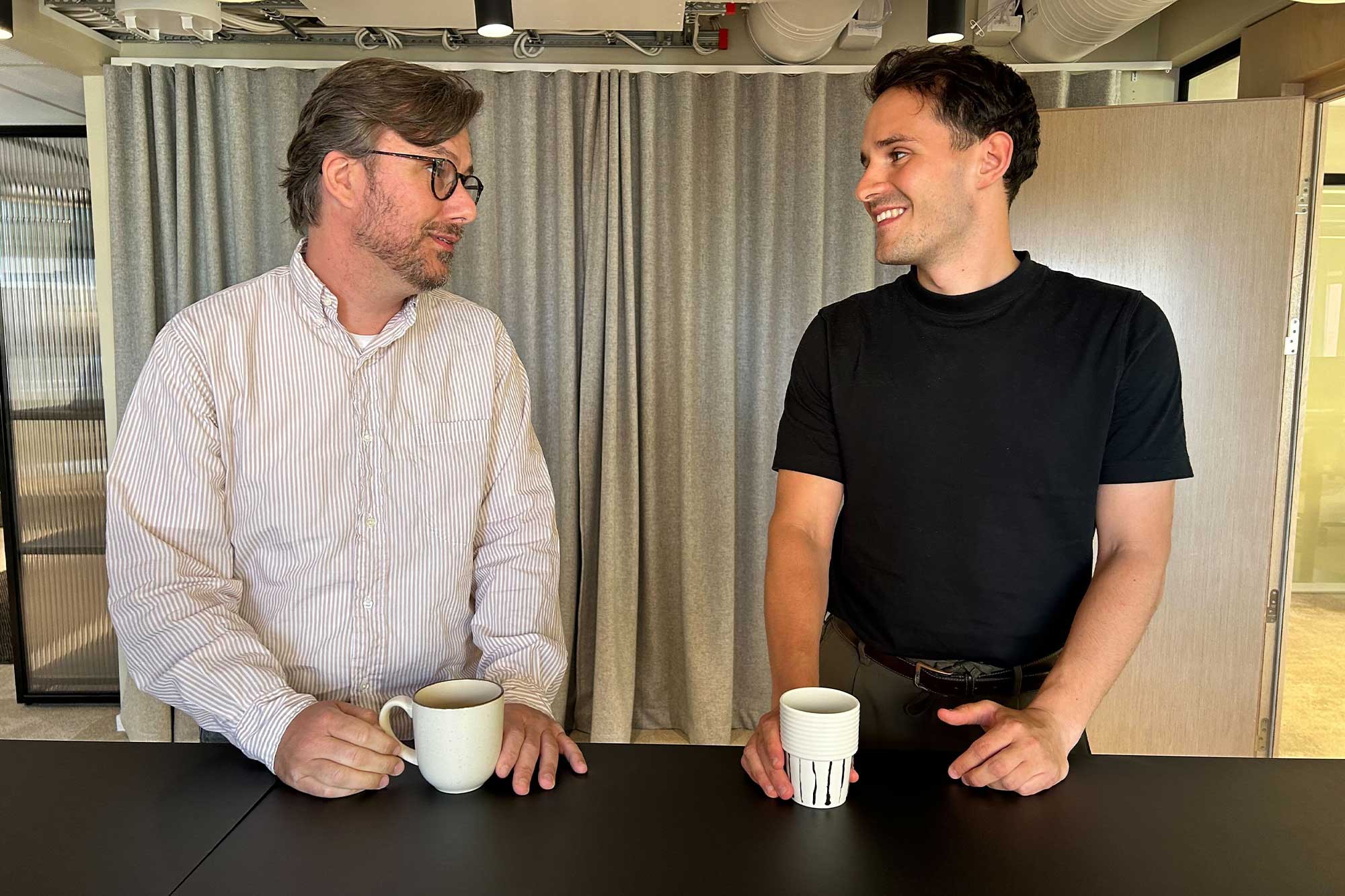How do we find stellar, senior data leaders? We create them.
It’s no secret that when it comes to data roles in Sweden, there’s a bit of a skills gap. It’s always been a particular challenge to recruit senior-level Data Architects. It’s a rarefied combination of skills and experience.
So, how do we solve this problem? We give our own people the opportunity to grow their expertise, thanks to our internal Data Architect Academy.
We love the steep part of any learning curve, and we want to instil that same feeling in all our Solitans. That’s why we’re here to help them make the climb.
In this blog, we talk to two bright and ambitious Solitans, Kerim Numanovic and Dan Sydner, who had the experience of broadening their experience – and roles – thanks to our Data Architect Academy.
Want to know how they upskilled with the help of our experts and a cutting-edge course? Read on.
A broad view beyond data
Looking for a career pivot? Or maybe just a peek into a whole new world right under your nose? That’s what our people sign up for when they join the Data Architect Academy.
Take Kerim. He has four years of experience as a Data Engineer, and was approached by our Head of Data to take on the course. After working on a project with a lot of autonomy, he realised data architecture and modeling was a lot more than just sitting and writing code, so he wanted to learn more about it. It turned out to be a great introduction to a complex role.
Then there’s Dan. He’s been in the data game for more than 15 years. Even though he has a very experienced role as a Senior Data Engineer, the path towards data architecture didn’t seem clear.
“The step towards becoming a Data Architect didn’t come naturally to me, because it wasn’t a defined role,” he says. “I always had more technical roles, and an architect is more than that.”
The course attracts a wide range of people, some who are relatively new to data engineering, and others who are very senior in their field. But they all have one thing in common: a big urge to go beyond their experience and broaden their view.
During many different workshops over the course of six months, people learn about everything surrounding a Data Architect, including dimensional modeling, data modeling, APIs, data security, GDPR, PII, as well as other skills such as presenting, stakeholder management and project management.
The sessions are internal, and are done in parallel with customer work, so you can immediately apply your learnings to current projects.
“It’s not easy to define a Data Architect,” Kerim adds, “but that’s what makes it so great. It’s not about just drawing some data flows. It involves handling project managers, stakeholders, and understanding every part of a customer, project, and platform.”
If that sounds like a tall order, you’d be right. But the devil is in getting out of the details and gaining a high-level view of the business, which is exactly what the course encourages.
The softer side of data architecture
Data Architects do a lot more than just dig into data. But how do you unpick a complex and varied role for people on a slightly different career path?
“I usually have a very technical role,” Dan explains, “and while there were some technical sessions, it focused heavily on soft skills, which was enlightening.”
A Data Architect Academy might sound more technical than people-focused – but both Dan and Kerim were surprised to learn the opposite is true.
The lightning bolt session for both focused on stakeholder management. “I had a recent project that was tough,” Kerim says, “and I had trouble understanding who the stakeholder was. That session helped me with some great tips, and gave me a framework to map out the stakeholders in my project.”
It’s easy on projects to work in a silo and simply hand them off to other people. But the workshop, run by Solitans Jakob Svensson, Katrin Hellström and Vilhelm Möllerberg, offered a clear way to define who’s important and how to successfully implement changes.
“It was a really eye-opening session,” Dan agrees. “It gave a systematic way to think about stakeholders and a framework to map it out in a simple way.”
A session on presentation skills also offered a new perspective. “A helpful tip was to think of what you want to pitch to clients and give three reasons why someone should go along with it,” Dan says. “It gave us new ideas for structuring a presentation.”
Kerim has also been doing more and more presentations since the Academy. “It’s a useful skill when you’re arguing for and selling your ideas to clients.”
Think bigger, deliver better
The one major selling point of the Data Architect Academy? It’s Solitans that primarily hold the sessions.
“It makes it feel really good to work here,” Dan says. “It’s a great display of how many amazing people in different areas we have.”
It highlights Solita’s wealth of in-house expertise: the variety of the sessions and knowledge shared showcases what already exists for those interested enough to search it out. But the value of this goes beyond just the individual sessions.
“It means you know who everyone is and what they’re good at,” Kerim underlines. “You can just reach out to them on Slack afterwards. When you have any questions in the future, you can connect with them. That’s the open culture we have. Whether someone’s been here one year or 20, everyone’s happy to help.”
And the result of this compounding knowledge is tangible.
“I’m still in the same role, but the path is clearer. I take more care over who to communicate with, and I get more feedback that way,” Dan says. “The impact of this is that work becomes more satisfying.”
Kerim agrees. “Since the course, I take a bigger role in communicating with my customers,” he says. “Now, I care more about the impact the company has. I’m more outspoken, because it gave me the confidence and frameworks and tools to think bigger than simply delivering on solutions customers want.”
The path to data architecture – and beyond
“I wasn’t even 100% sure what a data architect did before the sessions,” Kerim admits. “You don’t have to have 15 years of experience, you just have to be curious, and interested in moving towards this kind of role.”
Dan agrees that it’s helpful to have a range of projects under your belt, so you have a sense of different work and cultures. “But it was a pleasant surprise that it wasn’t solely technically focused,” he says. “It helps to understand data and products, but you have to have broad expertise to become a good Architect.”
“It’s a lot more than just making data flow,” Kerim explains. “So it helps to be open to all the sessions. Some of them don’t sound like they’ll be interesting or relevant, but they’re all valuable, and will help you grow into an Architect, if you wish to, in the future.”
Whether you’re clear on your course to becoming a Data Architect or simply want to expand your horizons, the positive impact the course has on current projects is clear. “After each session,” Dan says, “it helps to set some time aside to reflect on your experience and how it relates to what you’re doing now. Because chances are – it will.”
Data Architect Academy is part of our Growth Academy. This initiative offers both role-specific learning paths and courses, as well as coaching on self-leadership, and certifications through our tech partners – to name just a few of our opportunities for development.
Want to learn more? Take a look at what we can offer.

